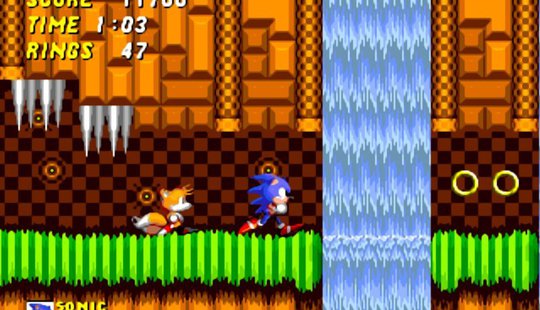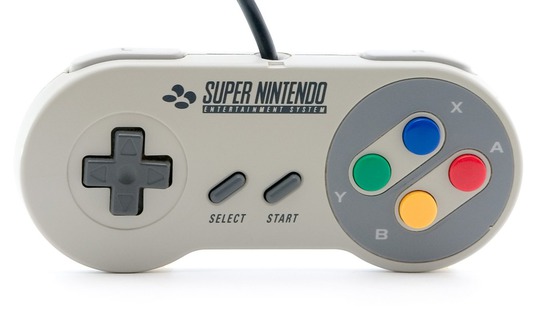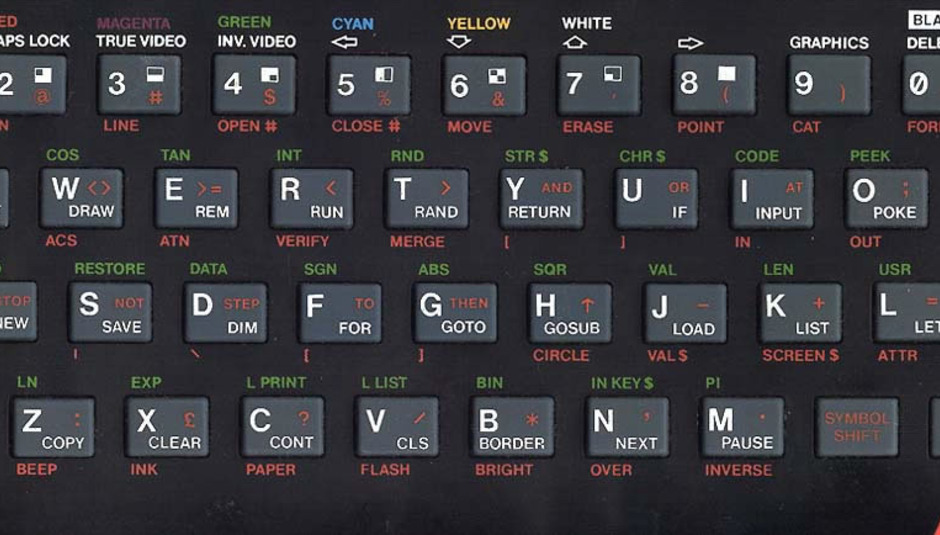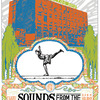So, why retro games for a column? Two reasons, really. Firstly, since Mass Effect 3 took over my life – at least that which I have outside of the important things (feed child, pay bills, sleep sometimes) – I’ve not had an opportunity to get to grips with anything new. Truth be told I am saving myself for Max Payne 3 – but more on that winner-in-the-wings next month. Secondly, I love ‘old’ games, those titles that made an impression on the 12-year-old me and I can still enjoy to this day, regardless of how they look or sound, or how many button commands one does (or doesn’t) need to memorise to get the most out of them.
I feel a greater buzz when the music to Super Mario Land on the Game Boy sparks into life than I do the epic score for Skyrim. I can pull off Street Fighter II combos in my sleep; but the violence of the Modern Warfare series leaves me strangely cold. I guess I’m ‘old’, and that’s a key factor in my enjoyment of retro games – but just as with albums, films and novels, a classic is a classic in the gaming world, and the very best of the best can be ever so easy to obtain.
Before I turn to my own memories for material, writer, comedian, broadcaster, Retro Gamer magazine columnist and renowned acolyte of old-school video gaming Iain Lee shares a few thoughts, memories and opinions on all things retro.
INTERVIEW: IAIN LEE

Following a spell as a stand-up comic, Iain Lee came to the public consciousness as the end of the 1990s as co-presenter of Channel 4’s satirical series The 11 O’Clock Show – the series introduced the likes of Sacha Baron Cohen and Ricky Gervais to the nation, and was certainly reliable for ‘the laughs’. Further TV work followed with RI:SE, which stepped into C4’s Big Breakfast-shaped breach in 2002, and Lee went on to work at radio stations LBC and Absolute, and could be heard on both BBC 5 Live and 6 Music. In early 2012 he launched The Iain Lee Pocket Radio Show, a free-to-download podcast featuring a popular, and frequently fall-about, phone-in section. He did pretty well on Celebrity Mastermind. He pens a monthly column for Retro Gamer magazine, which recently celebrated its 100th issue. Find his official website HERE.
“Brand new, you're retro,” rapped Tricky back when - but what, to your mind, 'makes' a retro game? Could a newly released title be considered retro? I’m thinking of something like Rayman Origins. Or must the term apply only to games from last-generation machines, and older?
I love the people who argue about what makes a game retro. Should a PS1 game be considered? GameCube? As with all things that are fuelled by passion, people can get very upset and angry about definitions. I think it's kind of fluid. I can totally view the PS2 and original XBox as being retro. Just look at the size of the XBox, and those huge controllers. How can anyone think that's not retro? I played one of my favourite games for the first time in years last week, Rainbow Six: Vegas (the first one, not the poor follow-up), and was amazed to discover there was no run button. Everyone was creeping around really slowly. It creaked and groaned and was wonderful. Is that retro? I would say yes, and it's a 360 game. Have I answered the question? No? Good.
You've a regular column for Retro Gamer, a magazine that's just celebrated its 100th issue. A few years back, could you have foreseen the retro gaming scene being so prominent amongst today's players, with a retro-specific title rubbing shoulders successfully with the likes of Edge and console-specific mags?
Yes, I could. It's like talking about old music or old films. The Atari VCS is Elvis; Spectrum and Commodore are The Beatles and The Stones; SNES and Mega Drive are the punks... you get the idea. These machines and games have sold in their millions. And people like looking back. Combine the two, and you've got a market. I'm lucky to write for Retro Gamer. I sent Darran (Jones), the editor, an e-mail on the off chance that he might let me submit some material. He did. I don't get paid much, and I still have to buy my own copies, but it's a great magazine. The retro gaming community is well served by it.
Gaming has gone through many stages of evolution, but each player has their own 'golden age'. (Me, I say 16-bit: it just seemed remarkable that I could play Street Fighter II on my TV.) But is it even possible to pin down a gaming 'golden age'? Or would you like to think we haven't reached it yet?
Oh, we are living in it now. Who'd have thought in their wildest dreams we would have consoles as powerful as the 360 or PS3. Machines that are so small, like the Wii, that you control by waving your arms in the air? You can catch up with TV using them? Download movies? Talk to your friends via video for free? But what really makes it so great is the hard work people are putting into making old games available to download next to brand-new titles. Of course there is nothing like playing Jetpac on a Spectrum or BBC, but the 360 online version is a pretty good second.
Do you remember the first game that you played, that got you hooked on mashing buttons and pumping 20p pieces into arcade slots?
It was Popeye in a horrid little arcade in Spain. I was totally hooked and obsessed by it.
Do you think that mobile gaming has been a catalyst for the popularity of retro gaming on old consoles? The pick-up-and-play nature of so many iOS hits seems more in keeping with 80s arcade conversions than it does the long, drawn-out campaigns of contemporary titles. Would you like to see more retro titles become available on the App Store?
I've got a few retro games on my iPhone, but I'm not really keen. I haven't played on other devices, but I really can't stomach the controls. It's pretty impossible to play an arcade game on a phone. Angry Birds and point-and-click games work well, but Pac-Man? I tried and it doesn't work. The C64 emulator on the iPhone got me excited, but while it looks good, it's pretty pointless in my opinion.

Retro gamers are very defensive of their preferred platforms. What are your 'classic' machines, and your favourite games for them?
I have a real soft spot for the Dragon 32 (pictured, above). It was rubbish, but it was my first computer and looked like pure magic to me. My top game on there was the migraine-inducing Alcatraz. The Dreamcast is a fantastic machine that never got the recognition it deserved. It's still wonderful and I urge everyone to go and buy one from eBay. The great thing is you can download the games and burn them onto a DVD. It plays great emulators as well. And, of course, I love the BBC Model B. The best game for it and the best game of all time is Elite, the disk version.
Every time I step into a second-hand store, I see banks of last-generation games ripe for rediscovery. Does it sadden you that so many classics from the PS2/Dreamcast/Xbox era are left collecting dust, when the relevant consoles can still be acquired for next to nothing?
No… People will never discover all the classic games. There are just too many. You know what you like, and that's great. And maybe you'll find a gem you never heard of. Even better. That's the beauty of collecting retro games.
If you could complete this sentence, that'd be a treat: "I love retro games because...
...I am a very old man with poor social skills and a desire to recapture that small piece of pleasure I vaguely recall as my childhood”
Iain Lee’s Pocket Radio Show can be downloaded from iTunes, and more information about it – and what else the man is up to – can be found at his website.

A SPECTRUM TOP FIVE
Some of you might have noticed that, on April 23, the ZX Spectrum celebrated its 30th birthday. With a massive user-base during its mid-80s peak, Sir Clive’s little black box of tricks was many a gamer’s entry point into a seemingly never-ending world of interactive stories, intense battles and magical quests. It was certainly mine, so I’ve cast my mind back to the days when I’d miss a kick-about with my mates in favour of drawing the curtains and hammering away at one of several already-partially-knackered Kempston joysticks. From time to time a parent would insist that I go out, and that playing computer games wasn’t a very sociable thing to be doing. They were right, of course – until friends started calling on friends with Speccy cassettes in hands, rather than footballs under arms.
I can’t claim to be a games master, someone whose knowledge of all things 8-bit can stand up to much questioning – but I do know what I like(d), and these games, when played/watched on YouTube today, make me smile the most smiley of smiles. They’re probably not the best Speccy games ever – head to World of Spectrum to check out what the latest ratings are – but they’re games I remember fondly. And perhaps you do, too.
Flying Shark (Wikipedia)
If my optician’s reading this: yep, this is almost certainly to blame for the initial degradation of my eyesight. A vertical-scrolling shooter, Flying Shark looked the tits in the arcade, bright and bold, furiously busy with tiny enemies to blast into teeny explosions. But the Spectrum version was a black-and-yellow monstrosity to look at. Frequently, tanks would blend in with trees, and bullets would sneak right up on the player’s biplane courtesy of being the same bloody colour as the background they were crossing. Cue me, squinting like someone ten-times my age would at today’s Saturday night telly, doing my best to make my way past some almighty battleship unloading an arsenal the size of Idaho at my miniscule plane (and hitting it with joystick-snapping frequency). I’m not sure I ever got past that bit.
Flying Shark walkthrough on YouTube
Renegade (Wikipedia)
My love of the Streets of Rage series – okay, maybe not including the third game – can be traced back to this side-on brawler, which much like Flying Shark landed on the Spectrum looking decidedly yellow. You could kick! You could punch! And it wasn’t in the mind at all – it was, quite brutally, on screen, as you’d pin a thug and pound him into submission. I recall it being rock-hard – but I was pretty rubbish at games at eight years old.
Someone being really bad – worse than me, even – at Renegade on YouTube

The Trap Door (Wikipedia)
I suppose it’s inevitable that once of these five is a spin-off of a television show I loved as a kid. I don’t recall there being a Transformers game on the Spectrum; if there was, I never played it. And since there wasn’t – or I missed it entirely – this is the game-from-the-telly title that I enjoyed the most. A simple thing, really, The Trap Door saw the player guide Bert through his daily chores for The Thing Upstairs. Naturally, a few things don’t go quite to plan. Although I’d have certainly played this on its easier setting, I don’t remember finishing it (though I certainly I do remember its awful sound effects – crappy, even by Spectrum standards.) But like I said: I was rubbish at these things. Why I kept re-loading them, day after day…
The Trap Door gameplay on YouTube
Frogger (Wikipedia)
This is, if memory serves me correctly, the first game I ever played. My uncle brought his computer around to our house – the first house I ever lived in, which puts this at some time before 1986 – and I got to have a go at this. Or, at least, a clone of it, of which there were many. But they all played the same way: guide a frog from one side of the screen to the other, avoiding numerous ways to get splatted or eaten. Simple, right? I already said I was rubbish, right? The Frogger series is still going strong – a 3D version was released for the Nintendo 3DS last year, and there are a variety of versions available for iOS
Frogger gameplay on YouTube
Bubble Bobble (Wikipedia)
The only one of these five games I’ve played in the last five years – see the Retro Compilation reviews, below – Bubble Bobble takes me back to my Speccy childhood from the very first notes of its delightful music (which speeds up as the enemies in each stage get angrier). A wholly decent arcade conversion by all accounts, its gameplay is wonderfully simple to explain: start level, trap baddies in bubbles, pop bubbles, baddies are dead, next level begins. There’s a little more to it than that, but that’ll serve any newcomer fine for the first few stages. And you’d better get settled in, as there are bloody loads of stages in this thing.
Bubble Bobble gameplay on YouTube

FANTASTIC FIVE – GOLD PANDA
Gold Panda, aka Derwin Schlecker, won plaudits aplenty, not to mention the Guardian’s inaugural First Album Award, for his sublime 2010 debut LP Lucky Shiner. DiS’s review of said electro-glitched, soulfully-quick-steppin’ and semi-fried-lightning set can be found here. Mr Panda took time out from his hectic schedule to pen a few words on five of his personal retro gaming favourites.
Crystal Quest (Macintosh; Wikipedia)
I used to spend the whole time with my mate playing this when I was about 10. I don't remember it all too well; I just remember playing it loads. You are a circle (probably a spaceship) and you have to use the mouse to navigate your ship to collect crystals – then the exit opens and you can progress to the next level. It was pretty simple but pretty difficult as you don't have much control over the craft – when you moved a mouse it was kind of like blowing a paper hat across a large puddle, or guiding a kite across a sky, but a sky filled with spikes and shit that will kill you. I remember getting frustrated with the crystals and enemies looking similar, but the best bit was the sound of a woman having an orgasm when you completed the level.
A-Train (Amiga; Wikipedia)
My mate Rob The Fucker and I used to go to Lewisham market in the multi-story car park most weekends to check what pirated Amiga games were out. They weren't on display, so you'd have to ask and they'd have to get to know you and then, in the back of an old Volvo (maybe), they'd have a couple of cases of disks. While one of us earnestly picked out a couple of games to purchase, the other would fill his coat. I used to love the way you'd try to lay a piece of track and it'd say "poor location" if the ground was a bit rocky, or there was someone's house there (not like real life). When you wanted to buy or sell something, or come to an agreement, there would be two hands at opposite sides of the screen and you'd have to button bash like crazy to get the handshake and seal the deal (just like real life). Other than that there wasn't much action, just build tracks and watch the trains go round and the day turn to night and the buildings put their lights on. Great graphics. I must admit, apart from Street Fighter II (which was brilliantly terrible on the Amiga), I don't remember ever buying a real game. Sorry, Commodore.
Street Fighter II: Champion Edition (various illegal hacked arcade versions; Wikipedia)
Wavelengths in Deptford had a version of Street Fighter II where Ken's dragon punch went sort of upside down. I loved the fact that every character could do endless special moves one after another, everyone had a projectile that just sort of came out and if you didn't like who you had picked then you could tap start and change character mid-fight. The most normal and frequent one was the one where you could do two hadoukens at once, which went in zigzags, but there were plenty of other crazy versions including one I found in Broadstairs where about two moves would kill you. After playing that, the normal version in a chippy in Lewisham seemed so slow, but at least chips were fast.
Lucky & Wild (arcade; Wikipedia)
I discovered this on a school geography trip to Swanage. This was supposed to be two-player, but it was more fun with three people. The machine was a sit-down cabinet, with a steering wheel (and pedals) and two guns on the dashboard. You'd chase down crooks and shoot their cars as various goons returned fire. I loved the way you could see Lucky and Wild’s faces in the rear-view mirror, in various states of distress. There was a great bit where you smashed through a mall complete with terrified shoppers diving for cover. It was pretty hard and ate loads of my holiday money that my parents had given me. Every time I saw an arcade after that, I'd look for that game to no avail.
Road Rash (Sega Saturn; Wikipedia)
I hated realistic driving games (while I only liked boring, realistic train games). Lotus Turbo Challenge 2 was okay; Super Cars II was pretty fun, especially with the cheats; and Rock n’ Roll Racing on the SNES was mint. When I got a Saturn I mainly got it for fighting games, but I somehow got Road Rash from a friend. The kick was the most satisfying thing ever. Especially when performed at high speed in a mid-air jump. Knocking people into oncoming traffic and off cliffs, crashing into buildings and cactuses and, I think, cows. Unfortunately I never completed it, the levels just got too long.
Gold Panda has a website. He performs live this summer at Field Day (London, June) and Bestival (Isle of Wight, September), and has further dates confirmed. Do check his website for more details, likes.

REVIEW: RETRO COMPILATIONS FOR (SORT OF) CURRENT CONSOLES
There are many ways to play retro games today, but for very little outlay one can pick up a variety of really rather decent (official) compilations that will run on current-generation consoles. This is probably the easiest way of enjoying some genuine classics – and a few crappy novelty games. So here’s four that I’ve had the recent pleasure of investigating.
Taito Legends (PlayStation 2)
So this is a bit of a cheat (as is the next one), but the PlayStation 2’s life cycle is yet to be concluded by Sony, which makes this fair game (though, unfairly, it won't play in a PS3). And loads of you still have PS2s, I’m sure. This was also released for the Xbox, but sadly won’t play on a 360.
What’s included: A selection of 29 arcade games, including the original Space Invaders, now 34 years old. Some well-known titles packaged here are Operation Wolf, Bubble Bobble and Rainbow Islands (pictured, above).
The cherry on the cake: I’m tempted to say Bubble Bobble, after the above Spectrum nostalgia. But New Zealand Story and Rainbow Islands are equally as deserving of top-billing; likewise the perfect-to-this-day Space Invaders.
The shit in the sandwich: Lightgun games Operation Wolf and Space Gun don’t handle so well with a controller. I remembered really liking Continental Circus, a Formula 1-style racer, on the Amiga; but it’s utterly unplayable here.
Get it for: £4 on Xbox, a buy-it-right-now-amazing price of £2.50 for PS2, from Cex online.
Midway Arcade Treasures (PlayStation 2)
Again, this isn’t compatible on the PS3 – boo, at you, Sony – but represents a mega-bargain when found for a quid at a local second-hand store. Which is how I came by it. Also available for the Xbox, PC and GameCube.
What’s included: Twenty-four arcade titles, featuring a wealth of widely recognised names, such as Smash TV, Gauntlet and Paperboy.
The cherry on the cake: Robotron: 2084, released in 1982, is one of those games you read about loads, figure isn’t going to be worth the retrospective hype, but totally delivers. A frenetic points-grabber where the player has to overcome endless waves of enemy robots, it’s bloody hard; but when so many modern games hold the player’s hand from start to finish, it’s refreshing indeed to get one’s backside constantly beaten. It looks absolutely shit, though, so if graphics are your thing, don’t bother. Similar to play but rather more marvellous to look at, the “total carnage” of Smash TV makes it another winner. Spy Hunter is an excellent vertically scrolling shooter.
The shit in the sandwich: It pains me to say it, but Paperboy is crap. It really doesn’t handle well with the PS2 controller. Joust 2, despite its improved visuals, isn’t a patch on its predecessor. And while Rampage was a load of fun when first ported to home systems (i.e., when I was significantly younger), it’s painfully slow.
Get it for: I paid a quid, but you can pick this up online, again via Cex, for £3 on the PS2, and slightly less on the Xbox.

Mega Drive Ultimate Collection (Xbox 360, PlayStation 3)
Now we’re talking my language: the 16-bit classics that defined a generation of gamers... unless you had a SNES, naturally. (My brothers did; I had a Mega Drive; best of both worlds.) Retro Gamer awarded this collection 98%. Guess it lost 2% for not featuring ToeJam & Earl.
What’s included: Over 40 games of varied quality. The household names are present and correct – a selection from the Sonic series (the second game, with Tails, pictured above), the three Streets of Rage games, arcade hits like Altered Beast and Golden Axe – but also represented are a handful of intriguing later releases, like Vectorman (released in 1995) and Comix Zone (ditto), which competed for attentions with PlayStation and Saturn games. Both next-generation consoles were launched in 1994.
The cherry on the cake: I really like Comix Zone. It’s a beautiful work, a kinda-literal page-turner which really pushed the hardware of the time. But once mastered, it’s not the sort of title, despite its originality, which really encourages repeat plays. Unlike Streets of Rage 2, which I have completed too many times to remember. Smooth combat, sturdy archetypal characters, chunky graphics and an amazing soundtrack: it’s a beat-em-up classic. Colourful platformer Ristar, another Mega Drive game released in 95, so rather left in the shadow of the Saturn, is something I never played at the time but really enjoyed on this collection.
The shit in the sandwich: Altered Beast. Sega’s Ancient Greece-set side-scroller might’ve looked the part in 1988, but its solid visuals couldn’t mask a mediocre-at-best game back then. And today, it’s as much fun as eating a werewolf’s arsehole for breakfast.
Get it for: It’s usually found in second-hand games stores easily enough, but if you’re wanting a brand-new copy, Amazon sells the PS3 version for £10.95. The 360 version is a little cheaper at a penny under a tenner.
Dreamcast Collection (Xbox 360, PC)
As Iain Lee said, up there, somewhere: “The Dreamcast is a fantastic machine that never got the recognition it deserved.” Well, now you can give it some. This four-game package was released in 2011, and was meant to appear for the PS3 as well as the 360 and Windows platforms… why it didn’t, I’ve no idea.
What’s included: Sonic Adventure, Crazy Taxi, Space Channel 5 Part 2 and Sega Bass Fishing.
The cherry on the cake: It’s the one you might not have seen coming, Space Channel 5 Part 2. It wasn’t available in the UK back in 2003, and gamers missed out on a gloriously bonkers rhythm action game. It’s just brilliant fun, and impossible to play without a big, dumb grin all over your face.
The shit in the sandwich: Sonic Adventure is horrible. Awful to control, baffling with its camera, utterly incomprehensible of narrative (that said, it’s not like earlier 2D titles had much in the way of story development), this is a real mess of a game. It’s easy to understand why Sega wanted to take Sonic into the 3D realm, as it’d worked so well for Nintendo’s mascot, Mario. But Sonic relies on speed – and if you get a rush on here, the impossible camera ensures you’re gonna end up off a cliff, dead in the water. Over, and over, and over again. Rubbish.
Get it for: Shop around a bit online and you’ll find it for under a tenner. I got my copy as part of a deal in Game, which meant it cost me about £7.

A RELATIVELY RANDOM TOP FIVE: RETRO CONTROLLERS
A new machine, a new controller – until PlayStation decided to stick rather than twist, anyway. Here’s five of the best from machines of the past.
The Super Famicom/Super Nintendo (pictured, above)
Oh, beautiful curved joypad of my dreams, how I love(d) you. Sleek, crisp to the touch and sweeping of curve… Ahem. It’s worth noting that those shoulder buttons on modern controllers started here – you couldn’t nail Rainbow Road without them.
Nintendo 64
Again, Nintendo, you’re spoiling us. What a delight to hold this beauty was: triple-pronged, with that magical analogue stick at its centre, not to forget that saucy Z button on the rear. Oooh, Nintendo, you cheeky developers, you. Whack a Rumble Pack into this baby and there was a party in your palms. Grrrr…
Master System
Props to Sega for adhering to the no pain, no gain mantra when developing their Master System controller. Even with tiny, pre-teen hands wrapped around it, this unsightly brick was a punishing pad to get to grips with over a prolonged session. No pause button, either, meaning muggins had to get off his arse to stall Wonder Boy III at the console every time he required a comfort break. So why is it here? Simplicity: one d-pad, two buttons, and that’s it. Not even a start button. Get you, Sega, and your economy. Bonus points, too, for making this compatible with the Amiga. Sensible Soccer was never the same again.
Dreamcast
But you learned, Sega, you learned. The Dreamcast controller is a wonder to behold – rocking SNES-like colours but going so much further, this had a screen on it, which’d play silly little animations when used with certain titles, and an analogue stick/d-pad left-side combo. While similar to the Saturn’s 3D controller – an ugly thing that looked like a pox-riddled Frisbee – this rather dandy design would influence the Xbox controller, which in turn led to the 360 controller. Aesthetic similarities are certainly there, although Microsoft wisely dumped the built-in screen thing.
PlayStation DualShock
Play Rez with this thing. It’s like raving with a jackhammer in your hands.

(LESS THAN) AWESOME GAME ENDING OF THE MONTH
I loved Turrican rather a lot. It was one of the first Amiga games I played, as it came with the computer, but I never reached its end. Looking at this clip, I’m kinda glad I didn’t – but the music, by Chris Hülsbeck, is great and the parting words instruct the player to “press the almighty button on your funstick”. Who knew Rainbow Arts were such filth-merchants?
Next month: A focus on Max Payne 3, and an exclusive interview with its soundtrackers, HEALTH.























